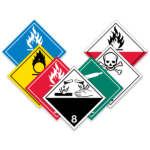
Transport Canada Training Guidance
Transport Canada had intended a significant overhaul of Part 6 of the Transportation of Dangerous Goods Regulations, but after publishing it in Gazette I for comment, took a step back after major pushback from the industry.
According to Transport Canada, they have not given up and plan to revisit the subject. Lisa Teller, Acting Chief of Regulatory Development, Regulatory Frameworks & International Engagement (RFIE) Branch, mentioned at a recent conference (something to the effect of), “We are at step 2; we learned a lot from the comments provided.”
In the meantime, Transport Canada released an updated guidance on “Basic Competency for transporting dangerous goods.” This guidance does not amend the Transportation of Dangerous Goods in any way. The full guidance can be found here.
The basic competency list includes:
Training certificate: Any person who imports, offers for transport, transports, handles, or transports dangerous goods must be trained and hold a training certificate or be working under the direct supervision of someone who is trained and holds a training certificate. The requirement is 3 years for ground and 2 years for air.
Shipping document: Identify the required location of the shipping document during the transportation cycle, the UN number, shipping name, class, quantity of the goods, and 24-hour number, and any additional information that might be needed, including the Emergency Response Assistance Plan.
Means of containment for the dangerous goods: Identify any compliance marks and inspection and test markings displayed on the means of containment.
Dangerous goods marks: Identify the UN number, shipping name, and primary and subsidiary hazard class labels displayed. Identify the placards that are shown and identify the UN numbers that are displayed.
Reporting requirements and taking emergency measures: Identify appropriate emergency measures that should be taken in the event of an incident or a release (using the Emergency Response Guide if they desire), describe circumstances when accidents and incidents must be reported, and identify the people to be notified in the event of a reportable accident or incident.
If you are not currently using ICC as your training provider, ask us for a quote. We have some of the best trainers in the industry – contact us today!
Stay up to date and sign up for our newsletter!
We have all the products, services, and training you need to ensure your staff is properly trained and informed.
 Glass Shipping Kits Glass Shipping Kits |
 TDG Publications TDG Publications |
 Placards Placards |





